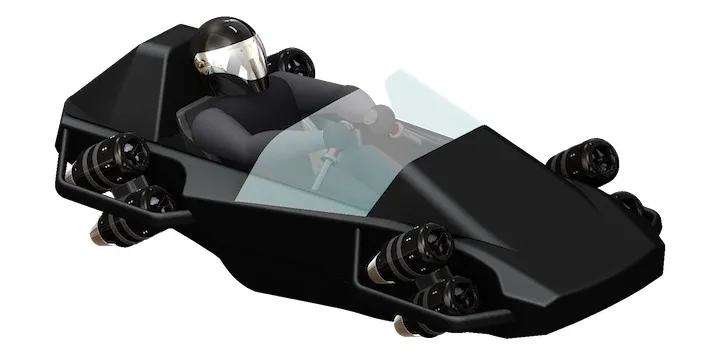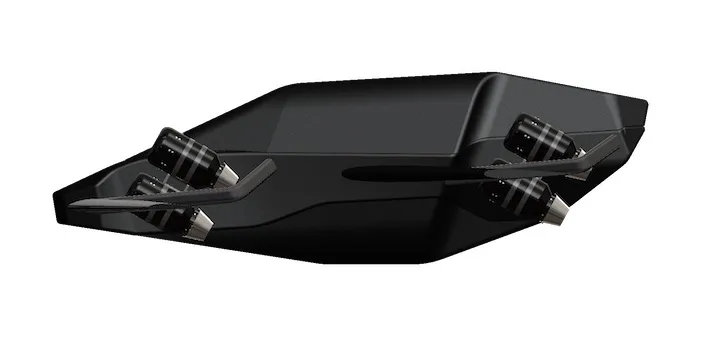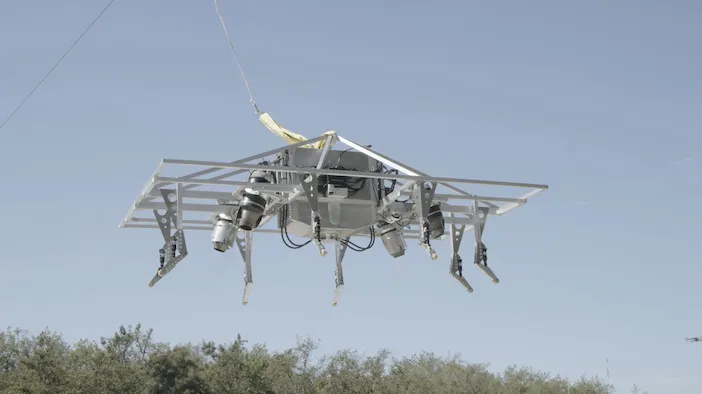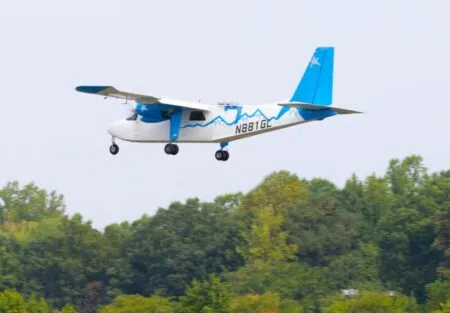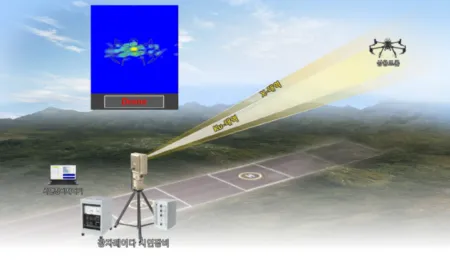California-based JetPack Aviation has completed initial flight testing of a prototype of its Speeder VTOL aircraft and has begun accepting pre-orders.
The company’s prototype of its Speeder jet-powered, vertical takeoff and landing (VTOL) aircraft, the P1 successfully concluded five months of flight testing during May.
The testing involved two-axis tethers to secure the P1 progressed through a single-axis tether and culminated in the aircraft flying with just a safety tether connection. The program achieved a series of test points aimed at proving the engine gimbal and articulated exhaust nozzle systems, as well as the flight controller.
The engine gimbal and articulated exhaust nozzle systems, combined with the mechanical elements of the Speeder control system, operate in conjunction with the flight controller, comprising a computer and flight sensors, to enable the aircraft’s maneuverability.
Within the confines of the 80ft (24m) tether system, P1 demonstrated the Speeder’s ability to take-off, climb, hover, yaw and perform slow transitions into forward flight.
JetPack Aviation is initially targeting the special missions market, for example the emergency medical services (EMS). The Speeder will offer a maximum speed of 150mph (240km/h) at an altitude of up to 15,000ft, have a flight time of up to 30 minutes and be capable of producing a maximum thrust of 1,200 lbs.
The company is also considering the urban air mobility market for longer term applications. JetPack Aviation has already begun readying letters of intent for customers and taking pre-orders for the aircraft, it said.
The company plans to fly the next prototype, the P1.5 within a few months to gather data that will inform the design and build of P2. It expects to conduct flight testing of the P2 between January and July next year.
P1.5 will use a smaller airframe than P1 and move the product closer to production configuration said the company. Like P1, it will use four engines, although the production model will employ up to eight.
P1.5 will also feature carbon fiber body panels. Testing will validate increasingly rapid transitions from vertical to horizontal flight, as well as faster forward, rearward, and lateral flight.
The P2 prototype Speeder will have a fully formed body, small, field-removable wings, and forward canards. The aircraft is sufficiently compact to be transported in a car or motorcycle trailer, and immediately ready to fly, with no charging or other requirements. It is expected to demonstrate high-speed forward flight with control and lift effected by aerodynamic surfaces as required, building on the aircraft’s proven capability to fly safely on engine thrust vectoring.
The Speeder burns regular Jet A-1, kerosene, or diesel, but in a recent cooperative supply agreement with Prometheus Fuels JetPack Aviation committed to using 100% zero net carbon fuel in all its future operations.
JetPack Aviation is one of the few companies in the world that sells and operates jet packs powered by mini turbojet engines. The company’s JB-10 and JB-11 jetpacks are similar to the jet suits produced by UK-based Gravity Industries.
The company has worked with the US Department of Defense and the world’s largest EMS company on applications for its jetpacks.
